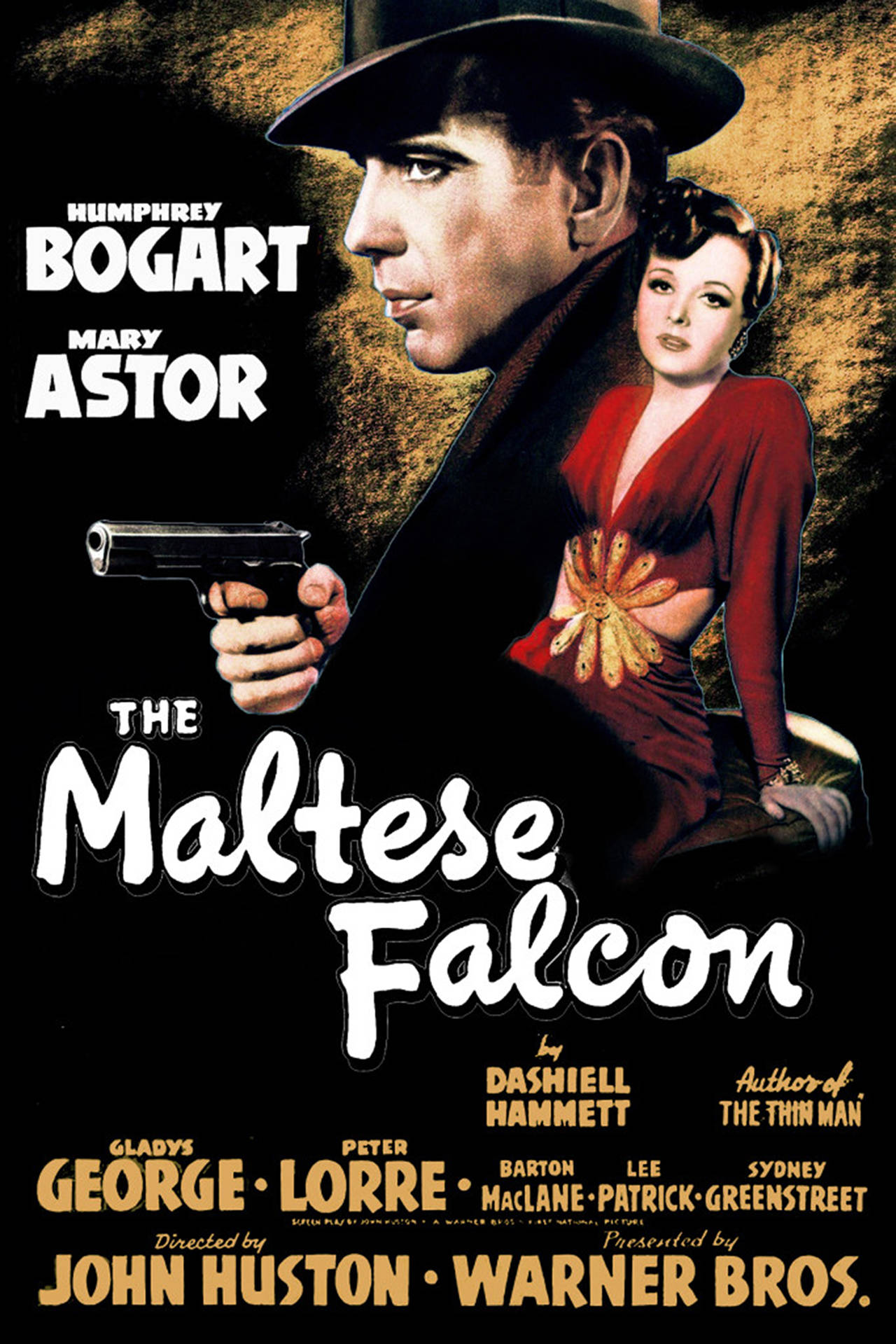First-time viewers of “The Maltese Falcon” might be surprised to discover its hero is actually somewhat of a jerk.
San Francisco private detective Sam Spade (played by Humphrey Bogart) has been carrying on an affair with his partner’s wife, but wants nothing to do with her once the partner’s death clears the way for a conventional relationship.
When the partner is killed, Spade wastes little time ordering the removal of the man’s name from the office door. He also takes inordinate pleasure in baiting and bullying his adversaries.
Audiences root for Spade anyway because he maintains a code of honor that transcends his shortcomings — and because the story’s other characters are even more amoral.
Many historians consider the 1941 version of “The Maltese Falcon” to be the first true film noir, and Spade as cinema’s first antihero.
The hard-boiled gem will be shown in Hoquiam on Saturday and Sunday as part of the 7th Street Theatre’s Silver Screen Classic series.
Based on a Dashiell Hammett mystery novel, the film opens with Spade and his partner, Miles Archer (Jerome Cowan), being hired by the sultry but mysterious Brigid O’Shaughnessy (Mary Astor) for a seemingly routine assignment: to find her sister, who has supposedly run off with a seaman.
But when Archer is killed on a stakeout, it become clear that Brigid’s true objective is to locate the Maltese Falcon, a jewel-encrusted statuette of untold value. Also in pursuit of the falcon are the corpulent, sinister Kasper Gutman (Sydney Greenstreet) and his effete cohort, Joel Cairo (Peter Lorre).
Other murders follow. Spade’s attempts to solve the crimes and track down the statuette are complicated by Gutman’s devious nature and O’Shaugnessy’s severe aversion to the truth (she initially even lies about her name).
The convoluted plot worked well enough in book form, but attempting to follow it closely in the big-screen version is probably a mistake. Characters (including Brigid’s sister) are referenced without ever appearing, and the whereabouts of the falcon is never made clear.
Fortunately, writer-director John Huston focuses primarily on the interaction of the characters. That includes some memorable confrontations between Spade and Wilmer (Elisha Cook Jr.), Gutman’s pint-sized hired gun who takes particular offense to the detective’s taunting.
It’s amazing that this movie was even made, considering that two attempts (one with Bette Davis playing the female lead) in the previous 10 years had flopped. Imagine Ben Affleck and Jennifer Lopez being granted permission to keep remaking “Gigli” until they got it right.
But Huston, already an acclaimed screenwriter but never before a director, convinced Warner Brothers studio chief Jack Warner to give the story another try by contending that the makers of the previous films were “idiots.”
Huston, who became one of cinema’s legendary directors, was anything but an idiot. But he also lucked out on casting.
George Raft, a bigger star than Bogart at the time, rejected the leading role because he didn’t want to work with an untested director. It is unlikely that Raft, a genuine tough guy but a one-note actor, could have mastered Spade’s complexities. Bogart, on the other hand, was a specialist in playing flawed heroes and oddly sympathetic villains.
Similarly a second choice for her part, Astor gives her character the type of breathless charm that makes you believe that even worldly men would forgive and forget her countless lies.
More surprising than the success of “The Maltese Falcon” is that it didn’t spawn sequels. Although Bremerton-born actor Howard Duff once played Spade in a radio series during the 1940s and Peter Falk portrayed a thinly disguised knockoff of the detective in a couple of 1970s parodies (“Murder by Death” and “The Cheap Detective”), the character never again appeared in a serious movie.
Evidently Warner wanted to feature Bogart in a series of Spade films, but Hammett refused to sign over the film rights to the character.
Perhaps the novelist realized that the third film version of “The Maltese Falcon” represented the stuff that dreams are made of.
* * *
“The Maltese Falcon” will be shown Saturday at 7:30 p.m. and Sunday at 2 p.m. at the 7th Street Theatre, 313 Seventh St., Hoquiam. Admission is $6. Advance tickets are available at City Drug, Harbor Drug, Crown Drug and online.



